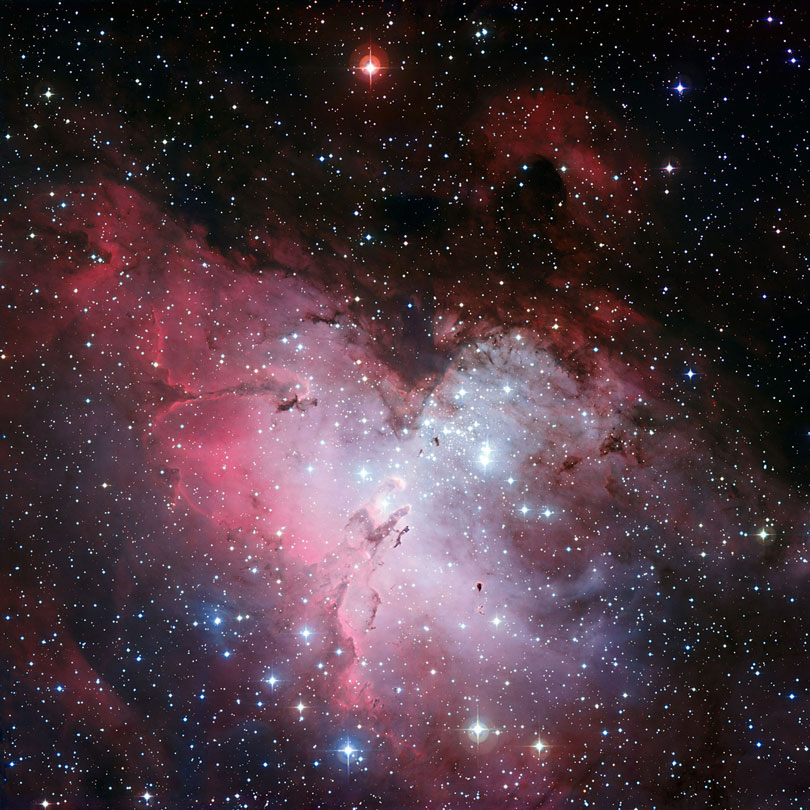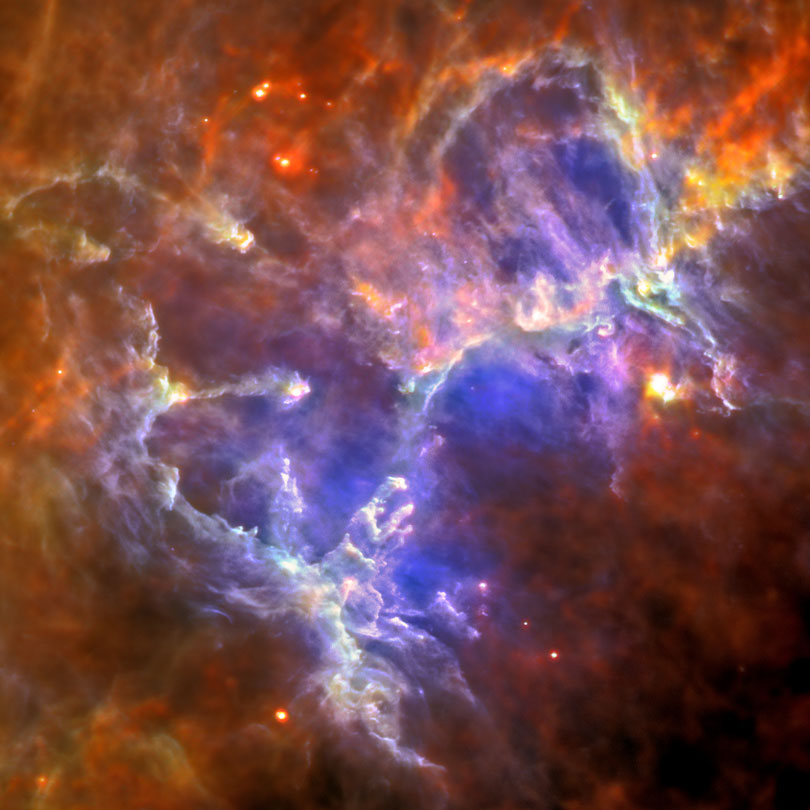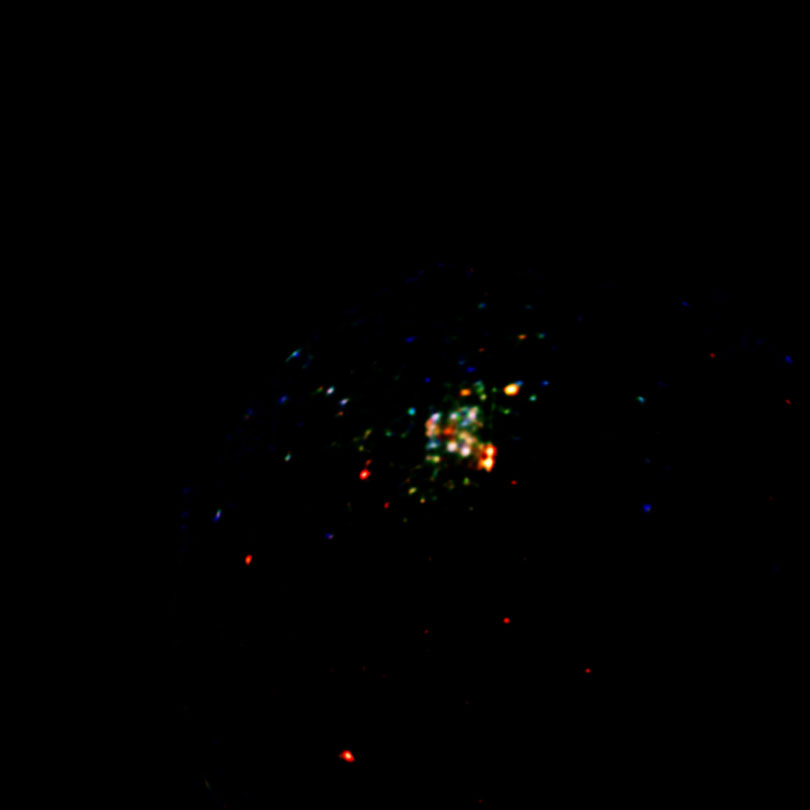- GALAXIES
- INFRARED WORLD
- INTERACTING GALAXIES
- MILKY WAY
- STAR BIRTH
- STAR DEATH
- GALAXIES
- INFRARED WORLD
- INTERACTING GALAXIES
- MILKY WAY
- STAR BIRTH
- STAR DEATH
Star Birth
Eagle Nebula (M16)



Visible:
Default View
Far Infrared:
LESS
MORE
X-ray:
LESS
MORE
Eagle Nebula (M16)
The Pillars of Creation sit inside a large region of gas and dust being pushed from the inside out by powerful stellar winds. The winds blow back the edges of the cloud, creating dense regions that then collapse under their own gravity to form stars. The characteristic fingers of the Pillars are some of the densest gas in this region, hanging on against the strong winds. In the visible-light view (taken by a ground-based telescope), they are entirely in shadow. The visible view shows the illumination of the inside of a kind of 'cavern' of gas and dust. The infrared view (taken by the European Space Agency's Herschel Space Observatory) reveals the massive, sculpted cavern walls that Webb will see in high definition. ESA's XMM-Newton shows the massive stars doing the sculpting, pouring off hot, ionizing winds that push back the gas and dust.
Visible:
The illumination of the inside of a kind of "cavern" of gas and dust.
Far Infrared:
Taken by the European Space Agency's Herschel Space Observatory, it reveals the massive, sculpted cavern walls that Webb will see in high definition.
X-ray:
Taken by ESA's XMM-Newton spacecraft, it shows the massive stars doing the sculpting, pouring off hot, ionizing winds that push back the gas and dust.
CREDITS:
Visible: MPG/ESO. Infrared: ESA/Herschel/PACS/SPIRE/Hill, Motte, HOBYS Key Programme Consortium. X-ray: ESA/XMM-Newton/EPIC/XMM-Newton-SOC/Boulanger. Web page design credit M. Merin (Pludo) and B. Merin.